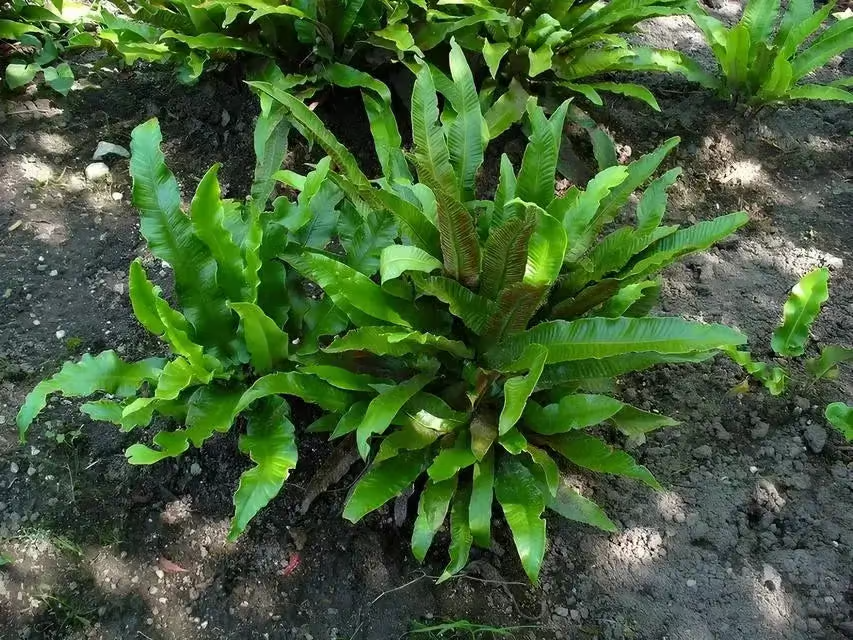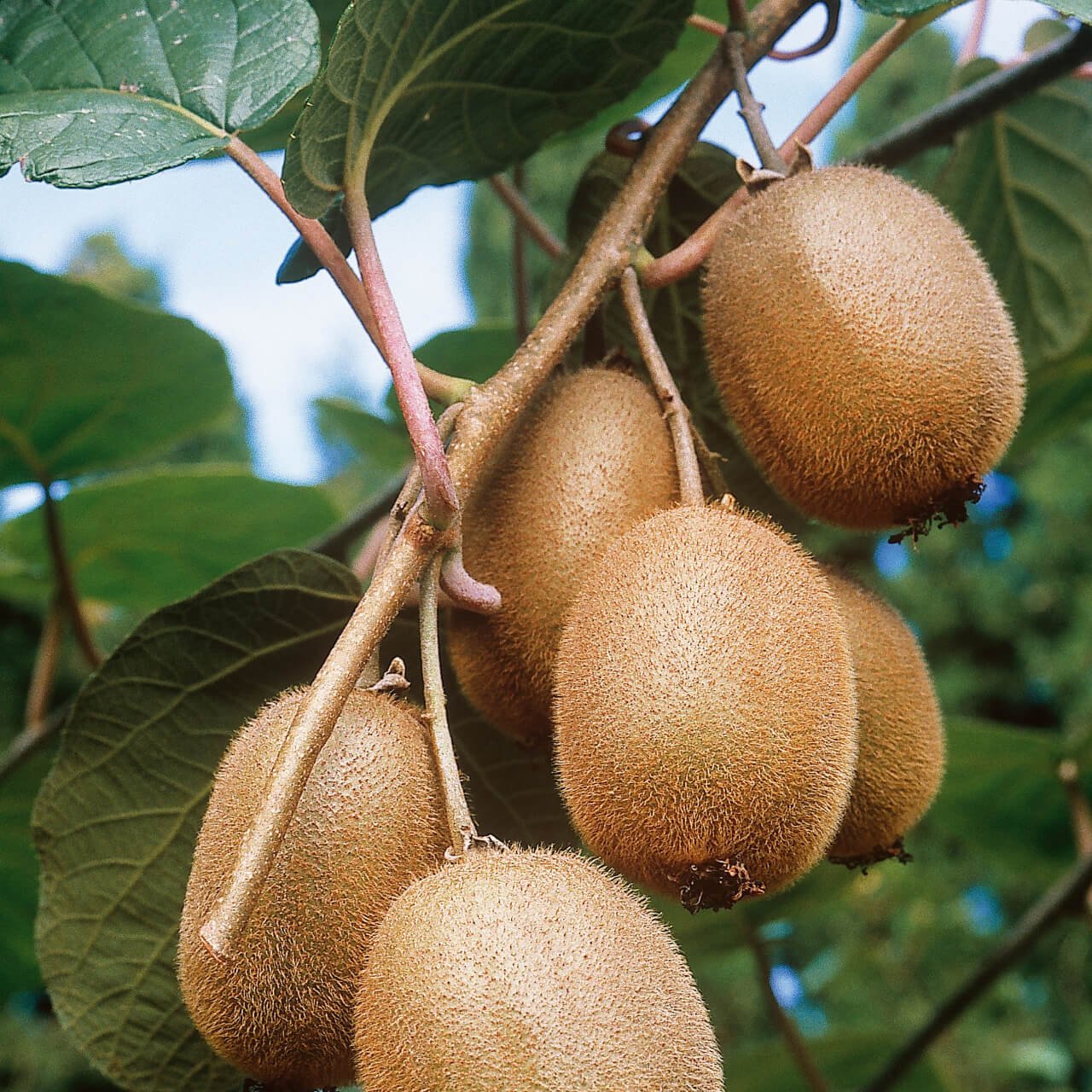



Walking Fern
Thrives in low-light conditions
Great for shaded or woodland areas
Low water and fertilizer needs
Thrives in
ZONE 5ZONE 6ZONE 7ZONE 8This plant ships:
Ships Now (5-7 Days)Walking Fern - Asplenium rhizophyllum
The walking fern is a small, trailing perennial known for its unique ability to reproduce by growing new plantlets at the tips of its fronds, giving it the appearance of "walking" across the forest floor. These fascinating and unique plants can bring natural beauty and intrigue to any landscape. These attributes make them highly desirable for landscaping projects in wild and cultivated settings. Here are some critical characteristics that make them excellent additions to any landscaping endeavor.
Asplenium rhizophyllum, are low-lying perennial evergreens and typically relatively small. They're also an opportunistic plant, meaning they'll grow on fallen tree trunks, rocks, or land. As long as there's some moisture nearby, they're good to go.
The Frond Blades Of Walking Fern
They have smooth, narrow, and elongated dark green blades. Each frond blade is shaped like a triangle and comes to a tiny tip. Because of this, the bulk of this plant comprises the bottom portion of each one. Furthermore, you'll notice that this unique evergreen has eared lobes on both sides.
As mentioned, they take any opportunity to grow and run with it! Essentially, wherever its parent touches the ground is where they'll call their home. From there, these evergreens appear to be trekking across the ground, hence their name.
The Lifecycle Of The Walking Fern
Although their root tips are where each new seedling comes from, the entire process is a bit more complex. The form that most people see is only one of a two-part cycle. Water is an essential component of making new life. Without it, the gametes cannot fertilize the eggs. Fortunately, this is something other than something to worry about as they naturally grow in mossy, watery areas.
They Multiples Quickly
You can plant Walking Fern in various places, but looking for a mossy area in the shade is best. Either way, sit back and watch out once they've been planted! One plant will turn into two quite quickly, which will then propagate further and further. It's possible to purchase one of these evergreens and end up with at least a handful.
They Are Low Growing Perennials
Their reproduction rate and method make them a favorite of people who usually have difficulty growing things. They provide a very appealing look for a natural lawn, and you won't have to do much to ensure they survive and thrive.
Do they release spores
They grow by way of spores - the primary form of propagation. They produce these spores on the inner surface of their leaves in patches of pouches called sori, which mature blackish.
Why is Adiantum referred to as this
The reason this plant is called that is because the plant can actually 'walk' on the ground, which is a rarity for plants. It spurs new shoots each time the tips of the fronds meet the soil as the plant 'walks' for a while.
What do the spores do once they are expelled
Once the spores have scattered, they latch onto another patch of wet, appropriate soil and grow into a tiny, heart-like form: gametangia.
How do they reproduce
It produces both sexually (with spores) and asexually (the leaf tips produce new shoots planted in the soil).
What do you do with the leaves
For the leaves to look good, mist the leaves backside up or put a glass of water into a place that's appropriate to it. Do not put the walking fern in direct sunlight, and periodically wash the leaves with a freshwater solution to remove dust.
This Is How Your Plants Will Look upon Delivery

Height at Maturity
Under 2 Feet
Care
Walking Ferns thrive in well-draining, rich soil and benefit from consistent moisture. They are best suited for shaded, humid environments. Regularly water to keep the soil evenly moist and prune dead fronds to encourage healthy growth.
Plant Reproduction
Walking Fern spreads by producing new plants from leaf tips
Choose early spring or fall when the soil is moist and cool to plant healthy bare-root ferns. You can also use dormant plants to grow year-round. When you arrive, please soak the roots in water for several hours to rehydrate them. Ferns thrive in moist and shaded areas. Dig a hole wide and deep enough to spread out the roots comfortably. Position the fern so the crown (where the roots meet the fronds) is just at or slightly below ground level. Gently backfill with soil firmly around the roots, and thoroughly water to settle the soil and eliminate air pockets. Apply a 2-3 inch layer of mulch for weed control and to retain moisture, ensuring the mulch does not touch the crown. Water during dry periods is used to keep soil moist but not soggy. Avoid fertilizing in the first year, as ferns prefer nutrient-rich soil over direct fertilization.
Shipping date depends on the date displayed and chosen when you order from the product's page.
We only accept returns on plants verified dead. If you think your plants have died, we offer a 1 year warranty, please use this File a Claim Link to verify dead plants and start with return warranty process.






Unique Propagation:
The Walking Fern spreads by tip rooting, creating a lush, self-propagating ground cover, making it a fascinating addition to any garden.
Shade Tolerant:
Thrives in shaded areas where many plants struggle, providing greenery in low-light spots.
Aesthetic Appeal:
Features attractive, arching fronds that add a touch of elegance and natural beauty to shaded garden areas.
Low Maintenance:
Requires minimal care once established, making it an excellent choice for busy gardeners.
Caring Tips
How do I care for my Walking Fern?
Each box contains detailed care instructions and information about your product. But here's the basics.
Care Tips
Walking Ferns thrive in well-draining, rich soil and benefit from consistent moisture. They are best suited for shaded, humid environments. Regularly water to keep the soil evenly moist and prune dead fronds to encourage healthy growth.
Light Requirements
Walking Fern thrives in partial to full shade, making it ideal for woodland gardens or shaded areas. It prefers indirect light and can tolerate deep shade, thriving in cool, moist environments with rich, humus-filled soil.
Hardy Planting Zones
5 • 6 • 7 • 8
Header
Use this content to share information about your store and products.
Frequently Asked Questions
How often should I water my plants?
How do I know if my plant is getting too much or too little sunlight?
What should I do to prepare my plants for winter?
What are the signs that my plant needs fertilizing?
How can I prevent pests from damaging my plants?
How do I choose the right plant for my climate zone?








